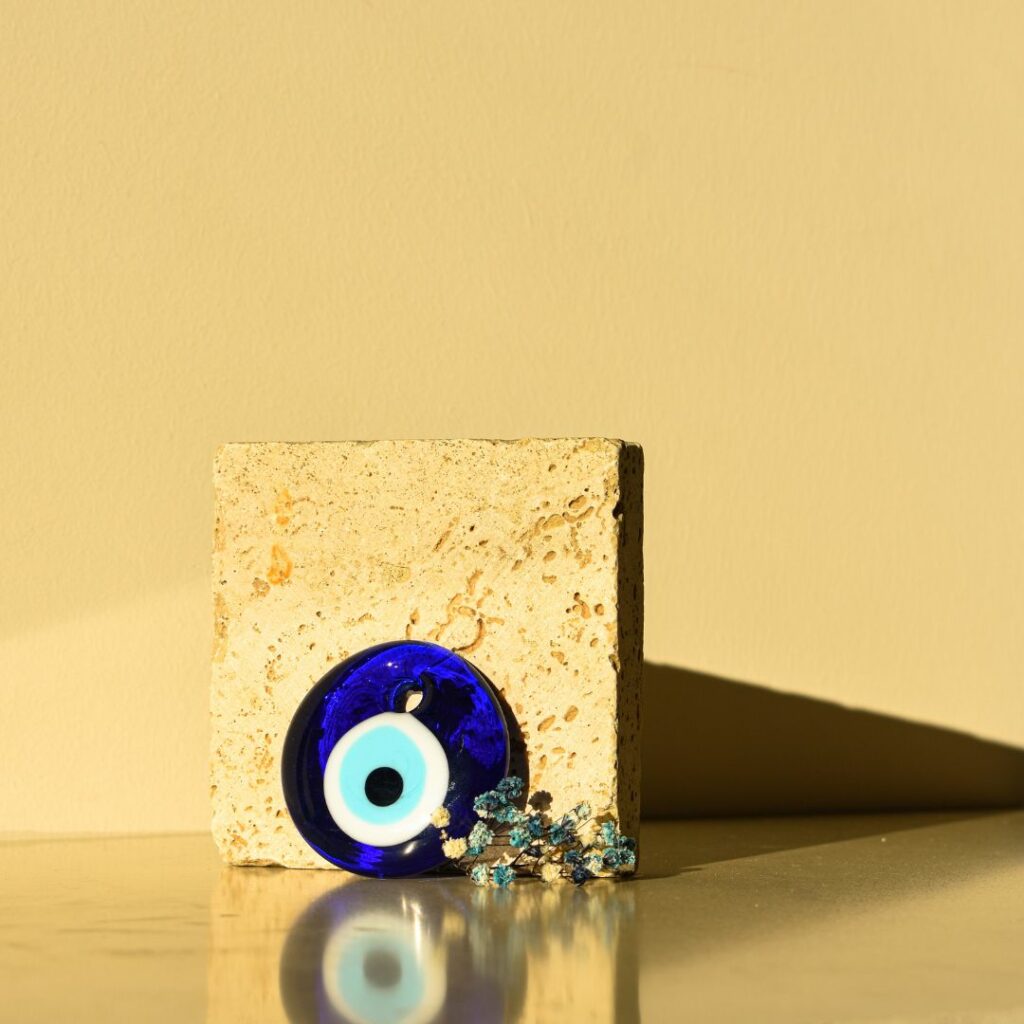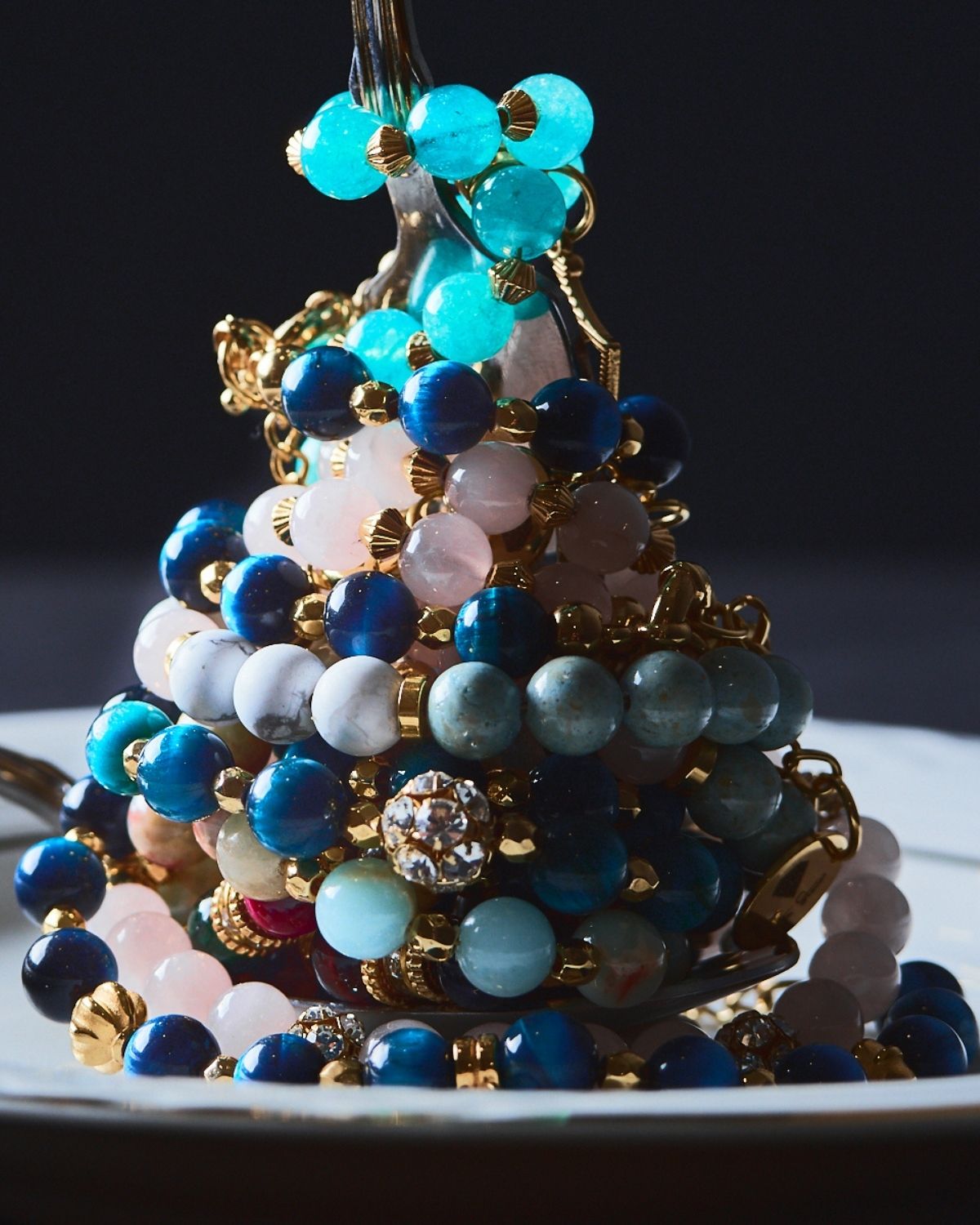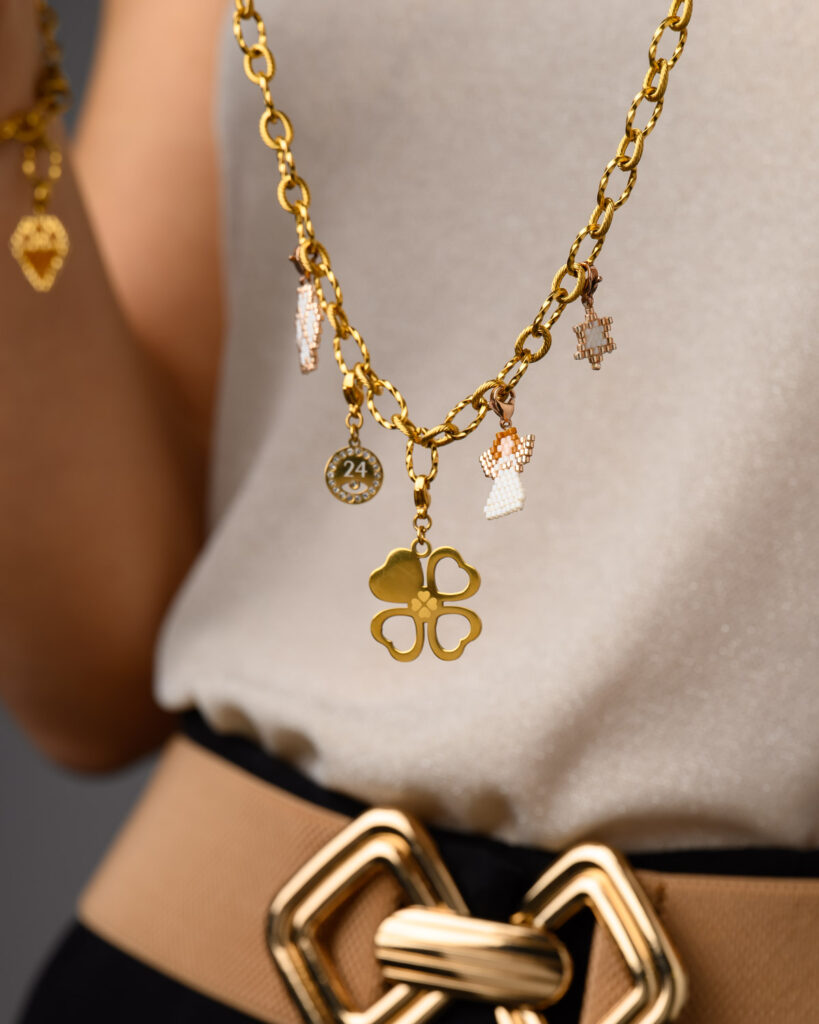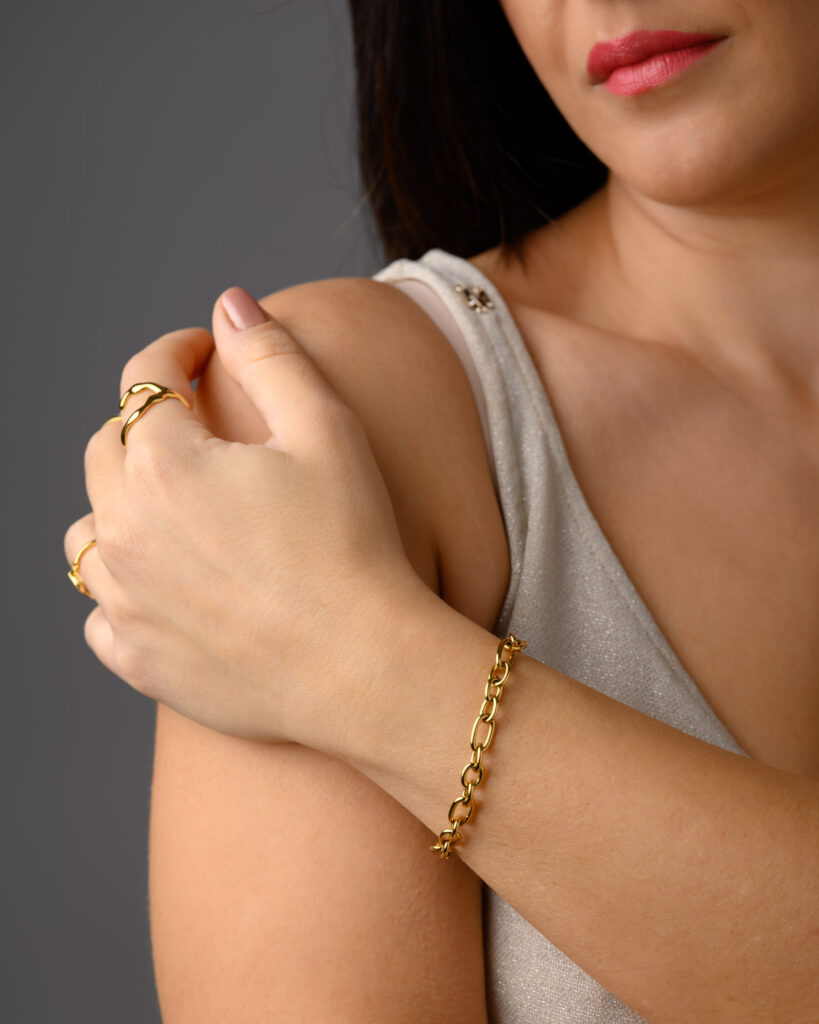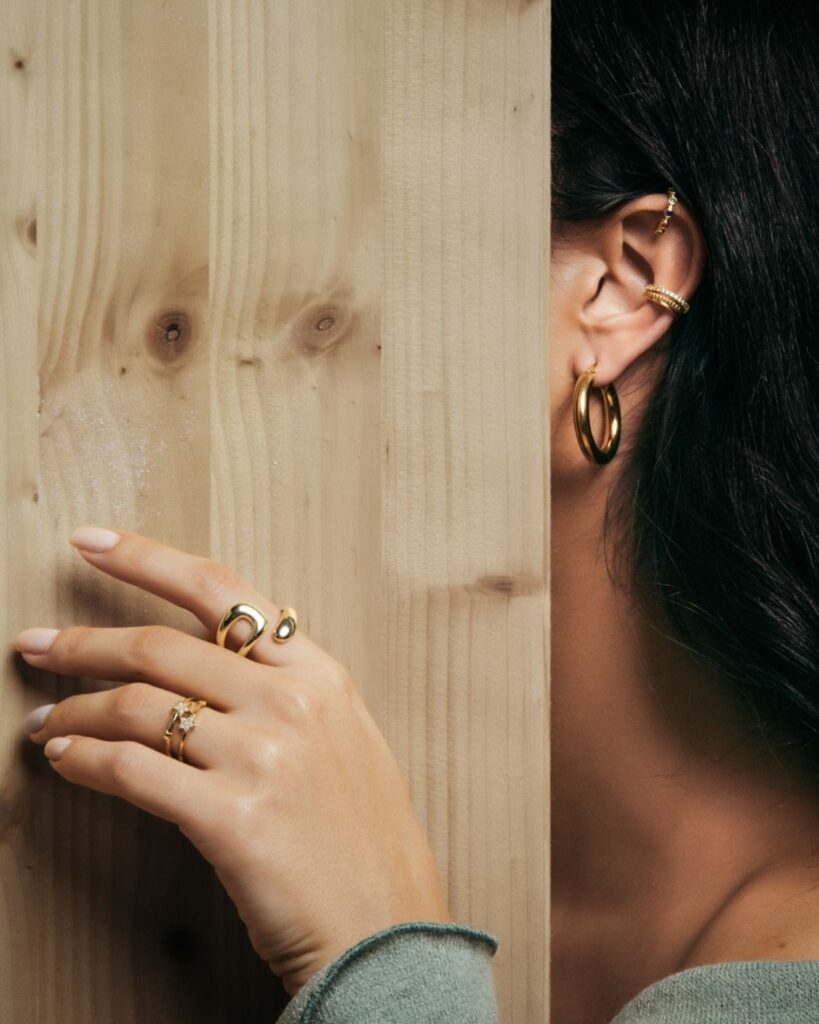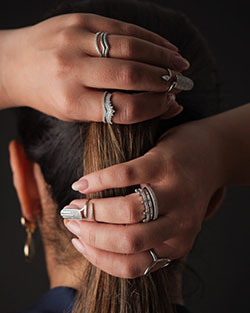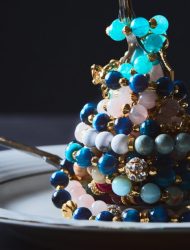Jewelry for Different Cultures: Celebrating Diversity in Style and Significance
Jewelry has been an integral part of human culture for millennia, serving not just as a form of adornment, but also as a symbol of status, spirituality, and tradition. Across the globe, different cultures have developed unique styles and designs of jewelry, each with its own story to tell. This exploration celebrates the diversity of jewelry styles and designs across various cultures, showcasing traditional and culturally significant pieces that highlight the richness of human heritage.
African Jewelry: Boldness and Symbolism
Africa’s jewelry is as diverse as its many cultures and ethnic groups, each with distinct styles and symbolic meanings.
Maasai Beadwork (Kenya and Tanzania)
Design
Maasai jewelry is renowned for its intricate beadwork. The Maasai use vibrant, multicolored beads to create elaborate necklaces, bracelets, and earrings. The patterns and colors are meticulously chosen, resulting in pieces that are not only visually stunning but also rich in cultural meaning.
Cultural Significance
Each color used in Maasai beadwork holds specific meanings. For example, red symbolizes bravery and unity, blue represents the sky and energy, while white signifies purity and health. These color codes are understood and respected within the Maasai community, making each piece a tapestry of cultural values and history.
Usage
Jewelry is worn during ceremonies and special occasions, playing a crucial role in rites of passage such as marriage and warrior initiation. For instance, a bride’s elaborate beaded necklace signifies her readiness for marriage, while a warrior’s adornments reflect his status and achievements.
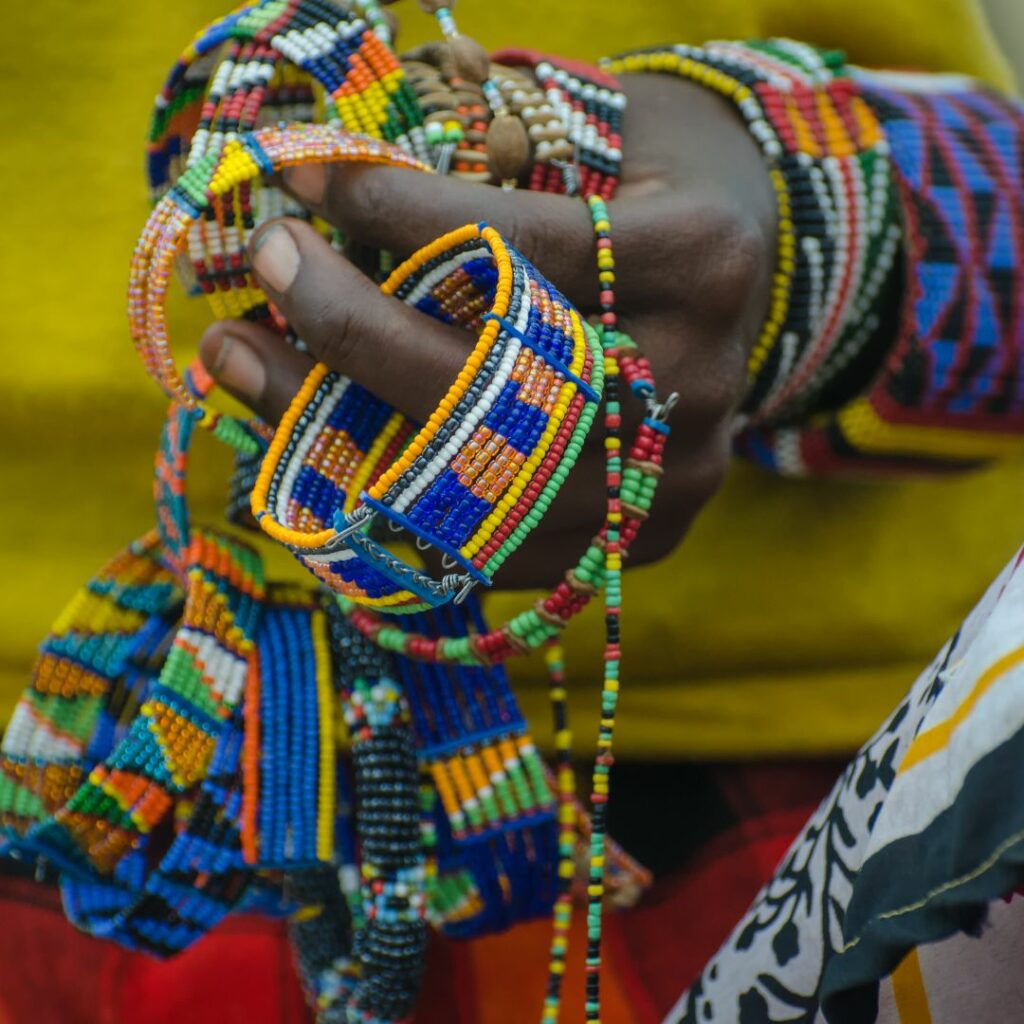
Tuareg Silver (Sahara Desert)
Design
The Tuareg people are famous for their finely crafted silver jewelry, often featuring intricate geometric patterns. These designs are not only aesthetically pleasing but also serve as cultural symbols that communicate the wearer’s identity and heritage.
Cultural Significance
Silver is believed to have protective qualities. The Tuareg Cross, also known as the Cross of Agadez, is one of the most recognizable symbols, often worn as a talisman for protection. Each cross design has a unique story and significance, passed down through generations.
Usage
These pieces are typically passed down through generations, serving as heirlooms and markers of identity. The jewelry is worn during important cultural events and daily life, reinforcing social bonds and preserving the Tuareg heritage.
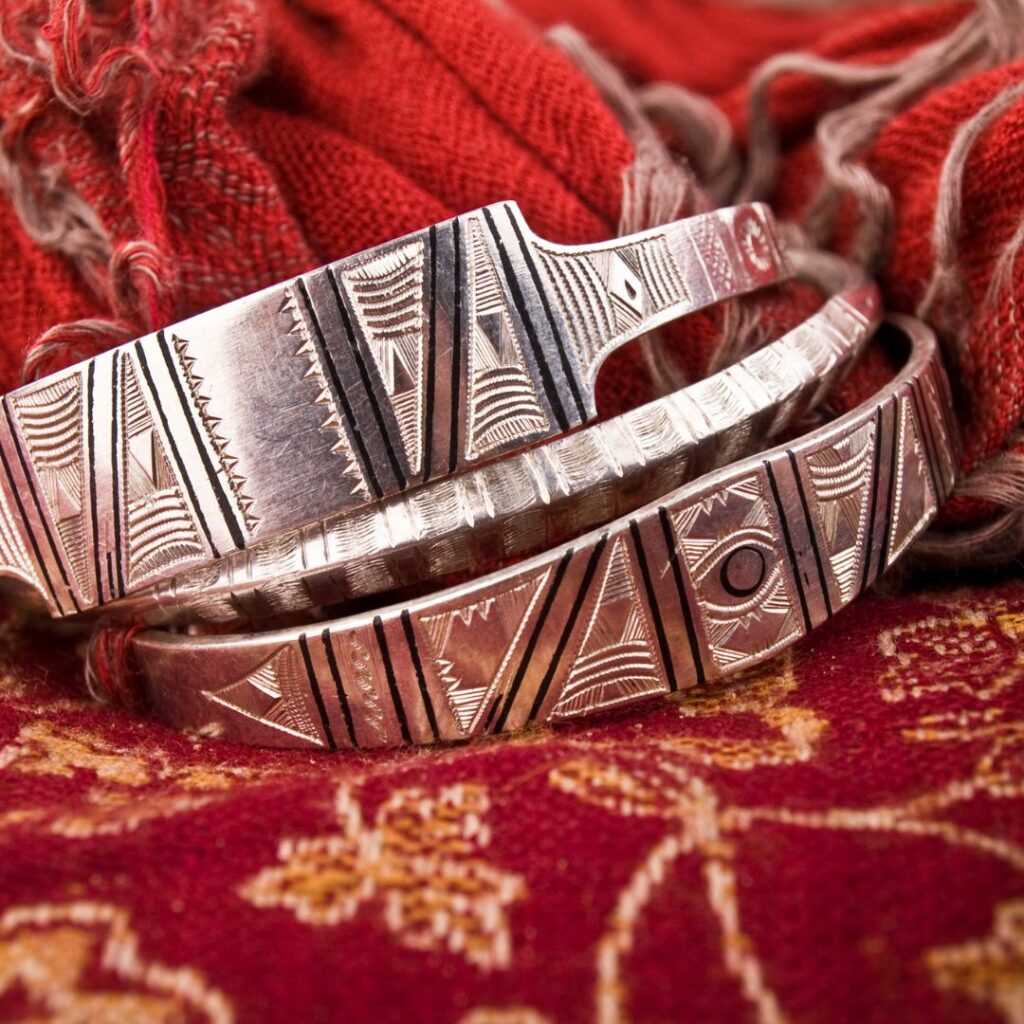
Indian Jewelry: Grandeur and Spirituality
India’s jewelry tradition is one of the oldest and most intricate in the world, deeply entwined with its culture, religion, and social customs.
Kundan and Polki Jewelry
Design
Kundan and Polki jewelry involve setting uncut diamonds and precious stones in gold, creating elaborate and ornate pieces. The intricate craftsmanship and use of high-value materials make these pieces a symbol of luxury and opulence.
Cultural Significance
Traditionally worn by royalty, these styles are now a staple in Indian weddings and festivals. They symbolize wealth, power, and divine blessings. The presence of such jewelry in bridal attire underscores the importance of these values in Indian culture.
Usage
These pieces are prominently featured in bridal attire and are often part of a family’s heirloom collection. They are worn during significant life events, ensuring that the traditions and blessings associated with them are passed on to future generations.

Temple Jewelry
Design
Originally designed for adorning Hindu deities, temple jewelry features motifs of gods, goddesses, and mythical creatures, often in gold with rubies, emeralds, and pearls. The detailed designs reflect the rich mythology and religious traditions of India.
Cultural Significance
This jewelry is deeply religious, used in various rituals and ceremonies to honor the gods. Wearing temple jewelry is a way of showing devotion and respect for religious traditions and deities.
Usage
Worn by classical dancers and during religious festivals, temple jewelry signifies devotion and cultural heritage. The elaborate pieces enhance the visual and spiritual impact of traditional dances and religious ceremonies.
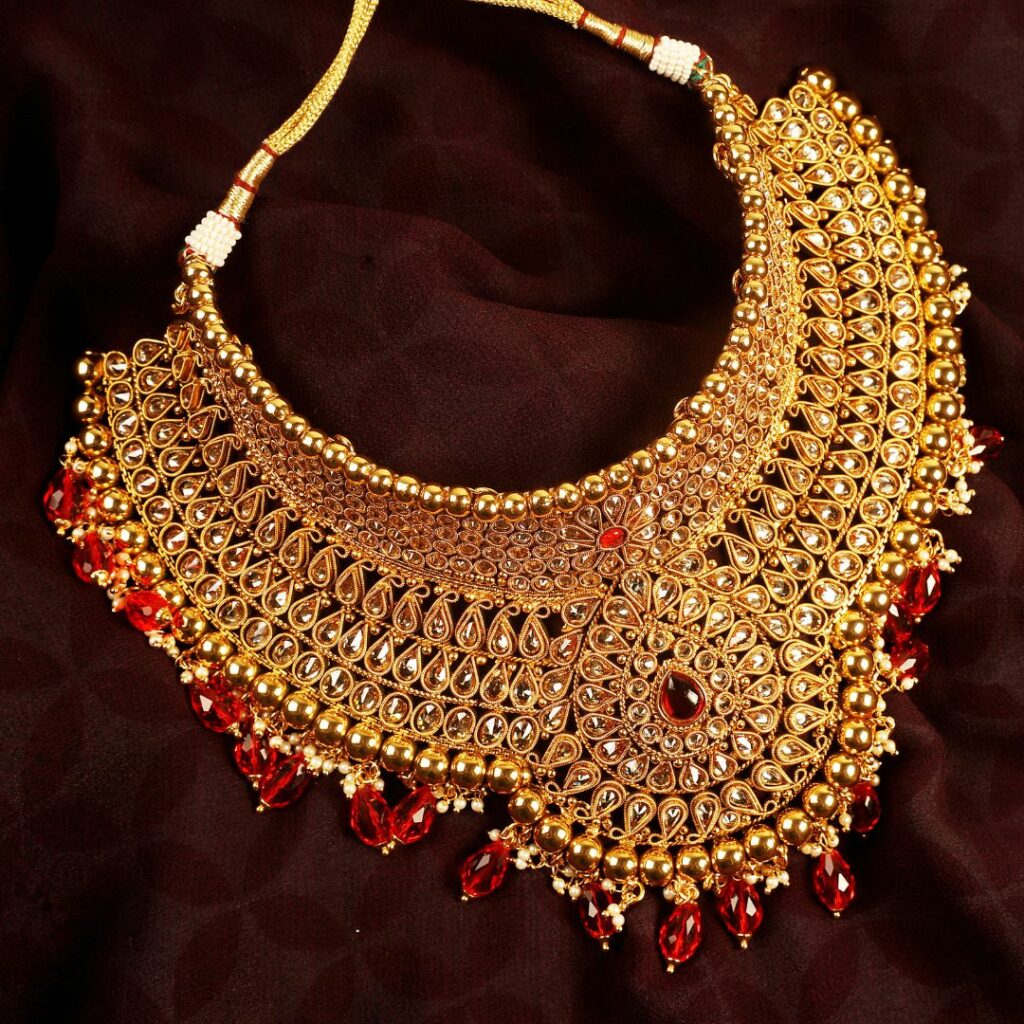
Chinese Jewelry: Elegance and Meaning
Chinese jewelry, with its delicate craftsmanship and symbolic motifs, reflects the country’s rich history and philosophical beliefs.
Jade Jewelry
Design
Jade is perhaps the most revered material in Chinese jewelry, carved into bangles, pendants, and intricate figurines. The stone’s natural beauty and the skill required to carve it make jade pieces highly valued.
Cultural Significance
Jade is believed to embody purity, protection, and moral integrity. It is often referred to as the “Stone of Heaven.” The stone’s attributes are believed to transfer to the wearer, providing spiritual and physical benefits.
Usage
Jade pieces are given as gifts to convey good fortune and are often worn as amulets for protection and health. They are also passed down as family heirlooms, connecting generations through shared values and traditions.
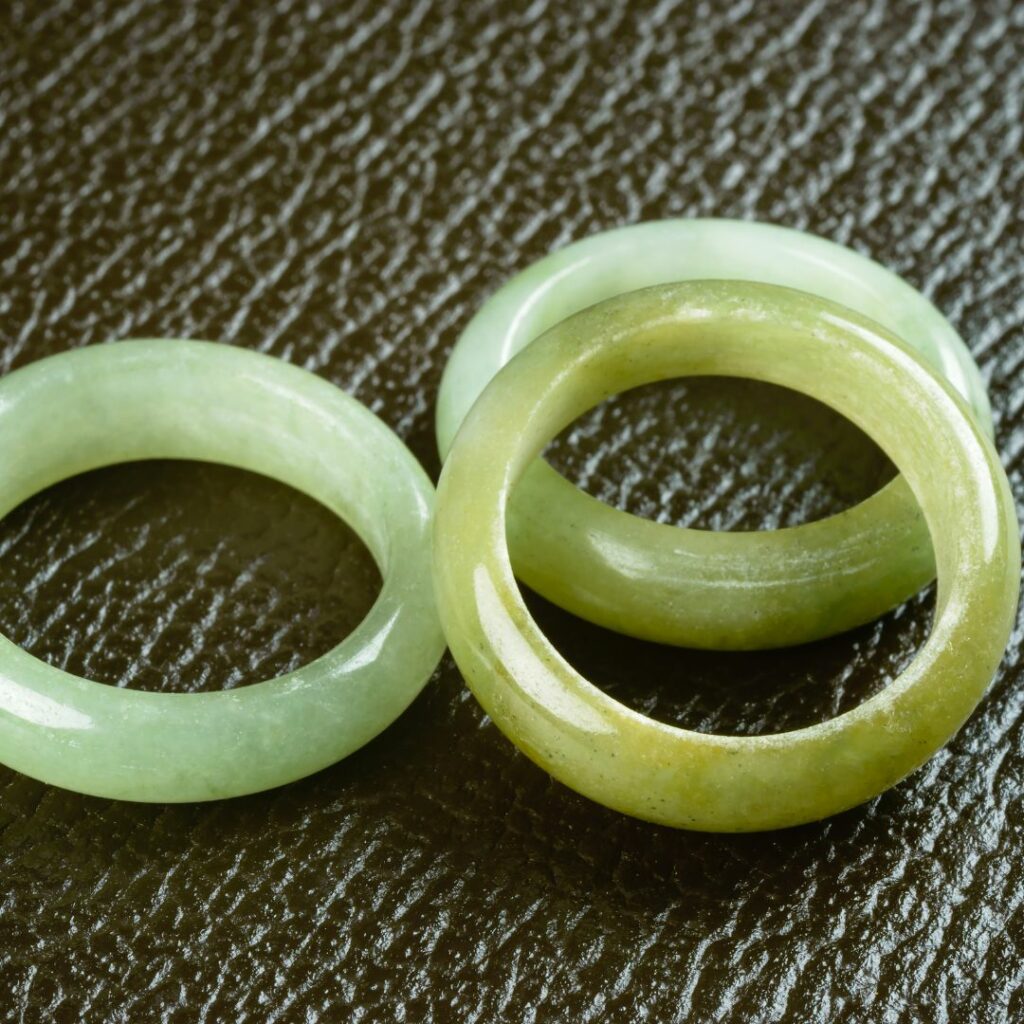
Golden Hairpins (Chai)
Design
Elaborate hairpins made from gold, sometimes decorated with pearls and gemstones, are traditional accessories in Chinese culture. The designs often include motifs like flowers and animals, symbolizing various virtues and wishes.
Cultural Significance
Hairpins symbolize status and are also used in traditional wedding customs. The giving of hairpins during a wedding signifies the bride’s transition into her new role and responsibilities.
Usage
Traditionally, they are part of bridal attire and are also worn during important festivals and celebrations. The hairpins serve as a reminder of cultural values and social structures, reinforcing the wearer’s identity and heritage.

Native American Jewelry: Craftsmanship and Heritage
Native American jewelry showcases extraordinary craftsmanship, with each piece often handcrafted and imbued with cultural significance.
Turquoise and Silver Jewelry (Navajo, Zuni, Hopi)
Design
Turquoise is extensively used, often set in silver to create stunning necklaces, rings, and bracelets. The combination of turquoise and silver is distinctive and immediately recognizable as Native American.
Cultural Significance
Turquoise is considered a sacred stone, believed to bring protection, health, and wisdom. The stone’s natural beauty and spiritual attributes make it central to many Native American cultures.
Usage
Jewelry pieces are worn during ceremonies, dances, and daily life, often signifying clan identity and personal achievements. The pieces are not only adornments but also symbols of cultural heritage and personal history.
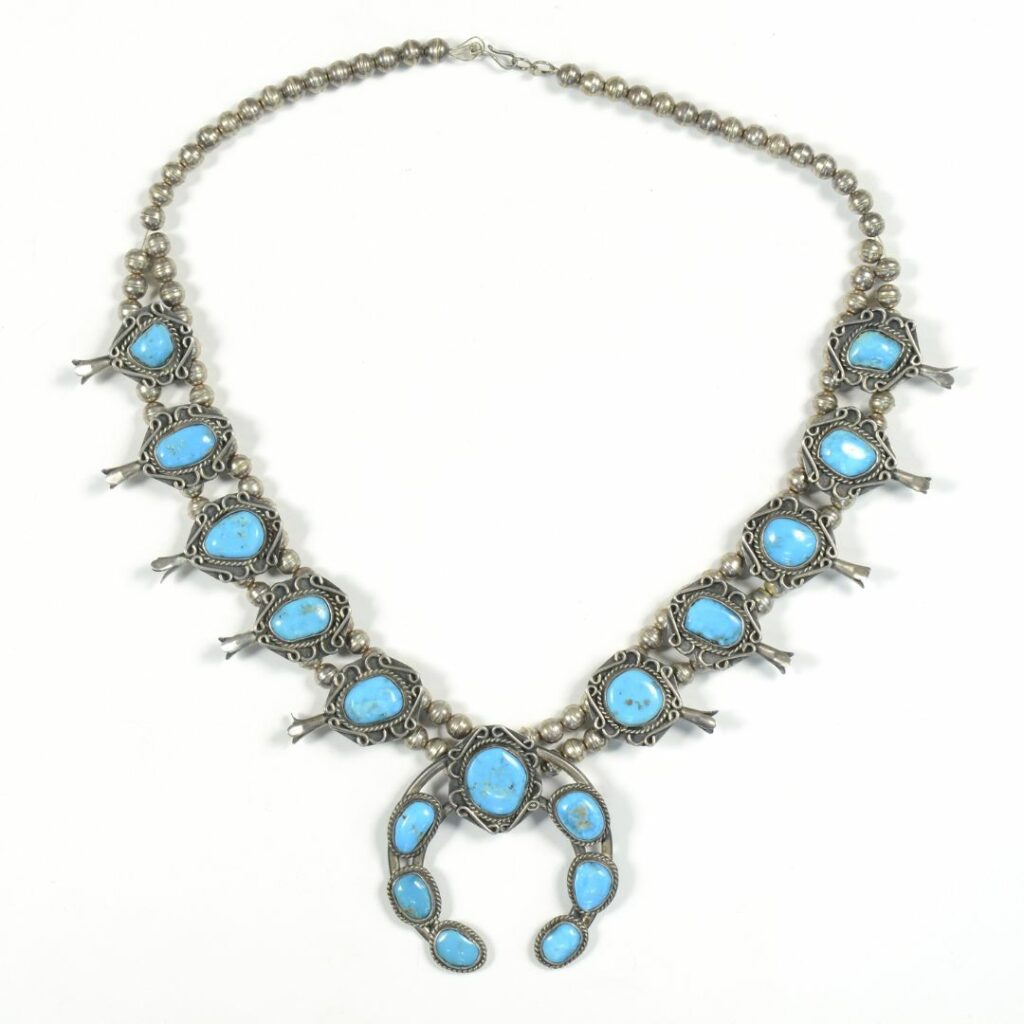
Wampum Jewelry (Northeastern Tribes)
Design
Made from the purple and white shells of the quahog clam, wampum beads are woven into belts and necklaces. The intricate beadwork and natural materials reflect the connection to the environment and traditional craftsmanship.
Cultural Significance
Wampum belts are historical records and are used in ceremonial exchanges to symbolize agreements and treaties. They play a crucial role in storytelling, diplomacy, and marking significant events.
Usage
Wampum jewelry is worn during important ceremonies and as a symbol of social agreements. These pieces are both artistic and functional, serving as a record of important cultural and historical events.
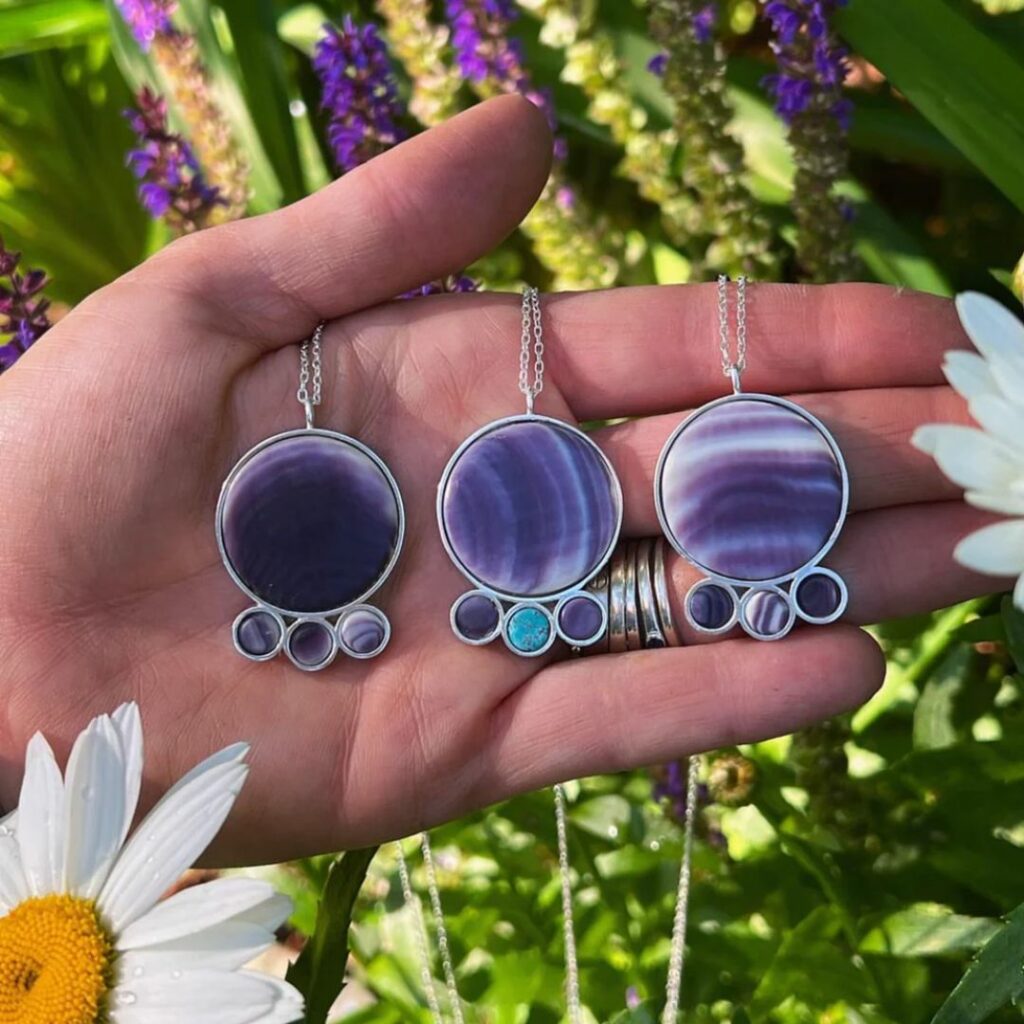
Middle Eastern Jewelry: Opulence and Tradition
The Middle East has a long history of jewelry making, with designs that emphasize opulence and intricate detail.
Gold Jewelry (Egypt, Arabia)
Design
Gold jewelry from this region is often elaborate, featuring filigree work, granulation, and large, eye-catching pieces. The luxurious designs reflect the region’s history of wealth and artistry.
Cultural Significance
Gold has been a symbol of wealth and status since ancient times. In Egyptian culture, it also had religious connotations, associated with the gods and the afterlife. The durability and beauty of gold make it a perfect medium for creating lasting symbols of cultural significance.
Usage
Worn during weddings, festivals, and important social functions, these pieces are also often part of a woman’s dowry. The jewelry serves both as adornment and as a tangible representation of wealth and social status.
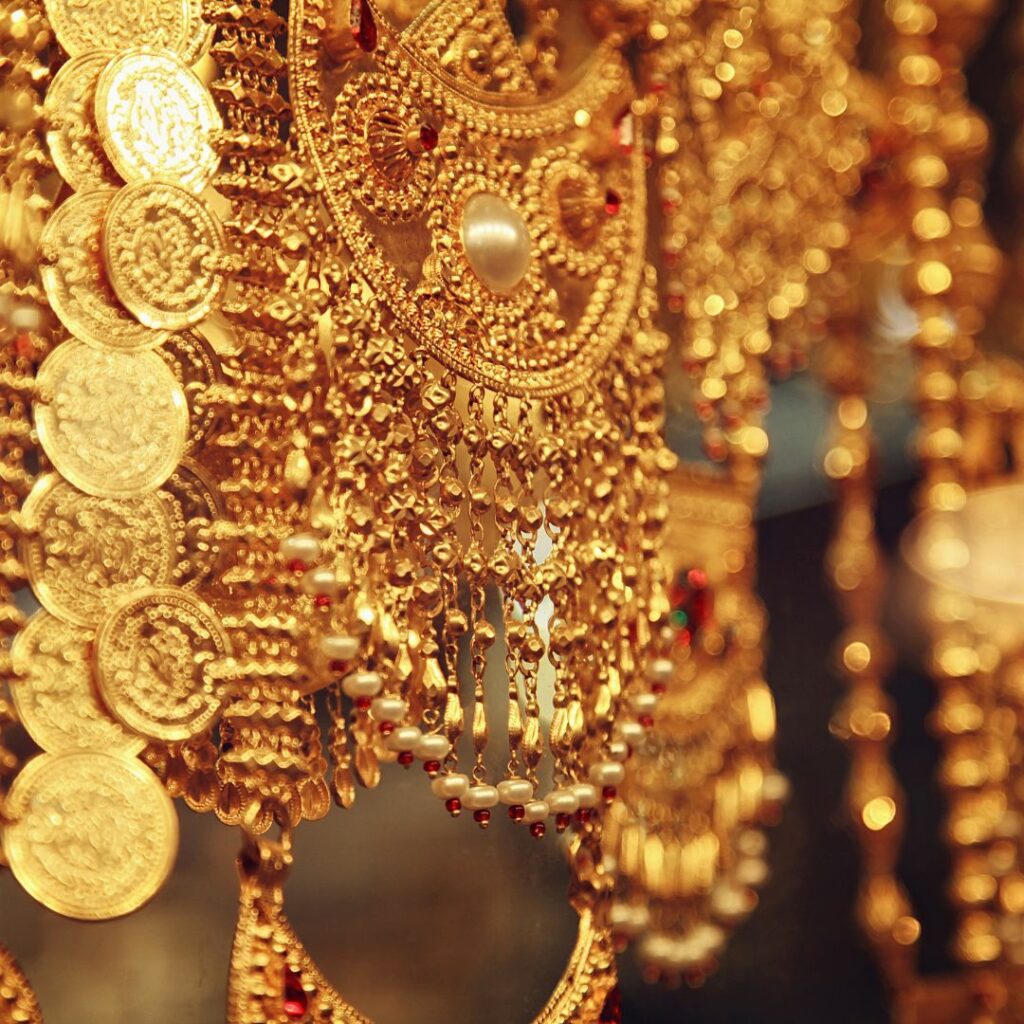
Hamsa and Evil Eye Jewelry
Design
These protective amulets are commonly crafted into necklaces, bracelets, and rings. The designs often incorporate the image of a hand (Hamsa) or an eye, both believed to ward off evil.
Cultural Significance
The Hamsa hand and the Evil Eye are believed to ward off negative energy and bring good luck. These symbols are widely worn across the Middle East and North Africa, reflecting a shared cultural belief in their protective powers.
Usage
These symbols are widely worn as daily protective talismans. The jewelry not only serves an aesthetic purpose but also provides comfort and security to the wearer, reinforcing cultural beliefs in protection and good fortune.
